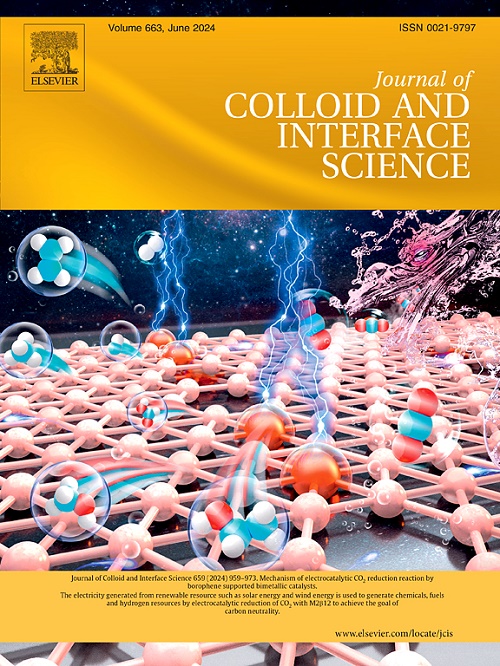Constructing artificial photosynthetic system based on graphdiyne double heterojunction to enhance REDOX capacity and hydrogen evolution efficiency
IF 9.4
1区 化学
Q1 CHEMISTRY, PHYSICAL
引用次数: 0
Abstract
Although traditional type II heterojunction designs for artificial photosynthesis show promise for photocatalytic hydrogen production, their redox capacity is somewhat limited due to the spatial separation of hydrogen evolution and oxidation reactions at less favorable sites. To overcome this limitation, ohmic junctions based on type II heterojunctions have been designed to enhance hydrogen evolution by transferring electrons to the metal component. In this study, a copper powder graphdiyne (Cu-GDY) composite catalyst with ohmic angle contact was synthesized by coupling copper foil with hexa-hexylbenzene. Incorporating Cu-GDY into CoGdO3 results in an interleaved band structure forming a type II heterojunction at the contact interface. This configuration overcomes the issue of the unfavorable conduction band position of CoGdO3, thereby promoting charge transfer. The internal electric field created by the Fermi level difference between Cu-GDY and CoGdO3, increase in REDOX capacity is the main reason for the increase of carrier separation rate. In addition, the plasmonic properties of copper expand the active reaction sites and promote the hydrogen evolution reaction. The composite catalyst exhibits b a hydrogen production rate that is 10.5 times higher than that of the individual catalysts. This work demonstrates that the formation of two distinct contact interfaces between Cu-GDY and CoGdO3 significantly improves the electron transfer and hydrogen evolution performance.

构建基于石墨二炔双异质结的人工光合作用系统,提高 REDOX 能力和氢进化效率。
虽然用于人工光合作用的传统 II 型异质结设计显示出光催化制氢的前景,但由于氢气进化和氧化反应在空间上分离于较不利的位置,其氧化还原能力受到一定限制。为了克服这一局限性,人们设计了基于 II 型异质结的欧姆结,通过将电子转移到金属成分来增强氢气进化。在本研究中,通过将铜箔与六己基苯偶联,合成了具有欧姆角接触的铜粉石墨二炔(Cu-GDY)复合催化剂。在 CoGdO3 中加入 Cu-GDY 会产生交错带结构,在接触界面形成 II 型异质结。这种结构克服了 CoGdO3 不利于传导带位置的问题,从而促进了电荷转移。Cu-GDY 和 CoGdO3 之间的费米级差所产生的内电场、REDOX 容量的增加是载流子分离率提高的主要原因。此外,铜的等离子特性扩大了活性反应位点,促进了氢进化反应。复合催化剂的产氢率是单个催化剂的 10.5 倍。这项研究表明,在 Cu-GDY 和 CoGdO3 之间形成两个不同的接触界面可显著提高电子转移和氢进化性能。
本文章由计算机程序翻译,如有差异,请以英文原文为准。
求助全文
约1分钟内获得全文
求助全文
来源期刊
CiteScore
16.10
自引率
7.10%
发文量
2568
审稿时长
2 months
期刊介绍:
The Journal of Colloid and Interface Science publishes original research findings on the fundamental principles of colloid and interface science, as well as innovative applications in various fields. The criteria for publication include impact, quality, novelty, and originality.
Emphasis:
The journal emphasizes fundamental scientific innovation within the following categories:
A.Colloidal Materials and Nanomaterials
B.Soft Colloidal and Self-Assembly Systems
C.Adsorption, Catalysis, and Electrochemistry
D.Interfacial Processes, Capillarity, and Wetting
E.Biomaterials and Nanomedicine
F.Energy Conversion and Storage, and Environmental Technologies

 求助内容:
求助内容: 应助结果提醒方式:
应助结果提醒方式:


